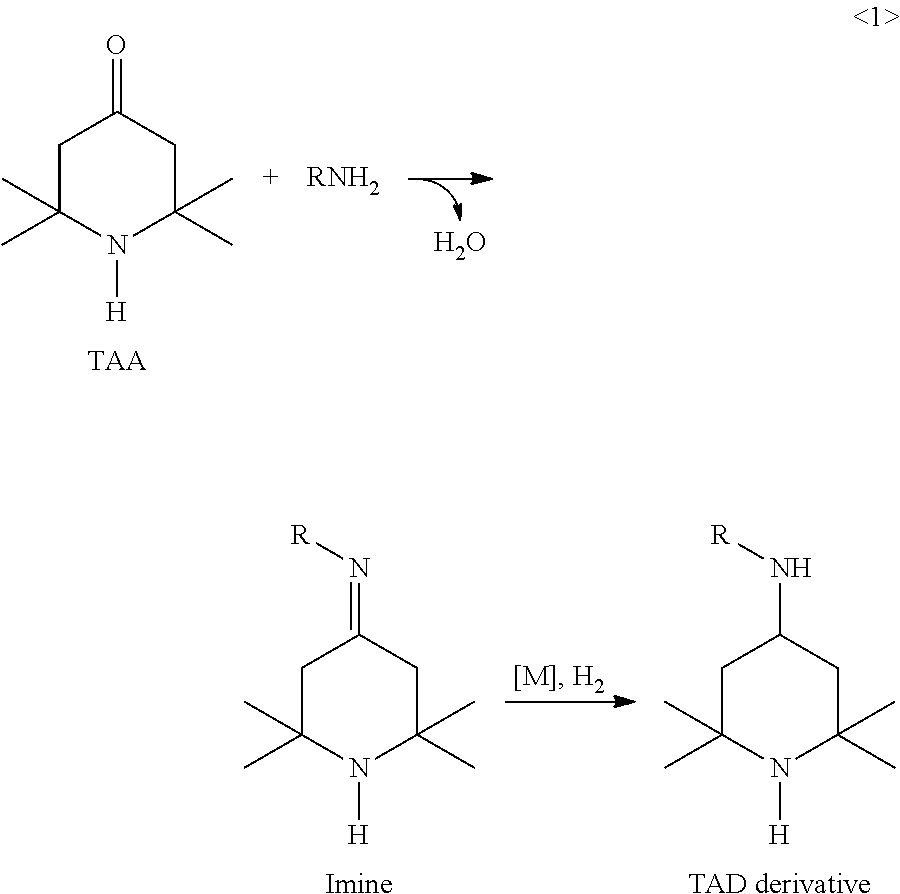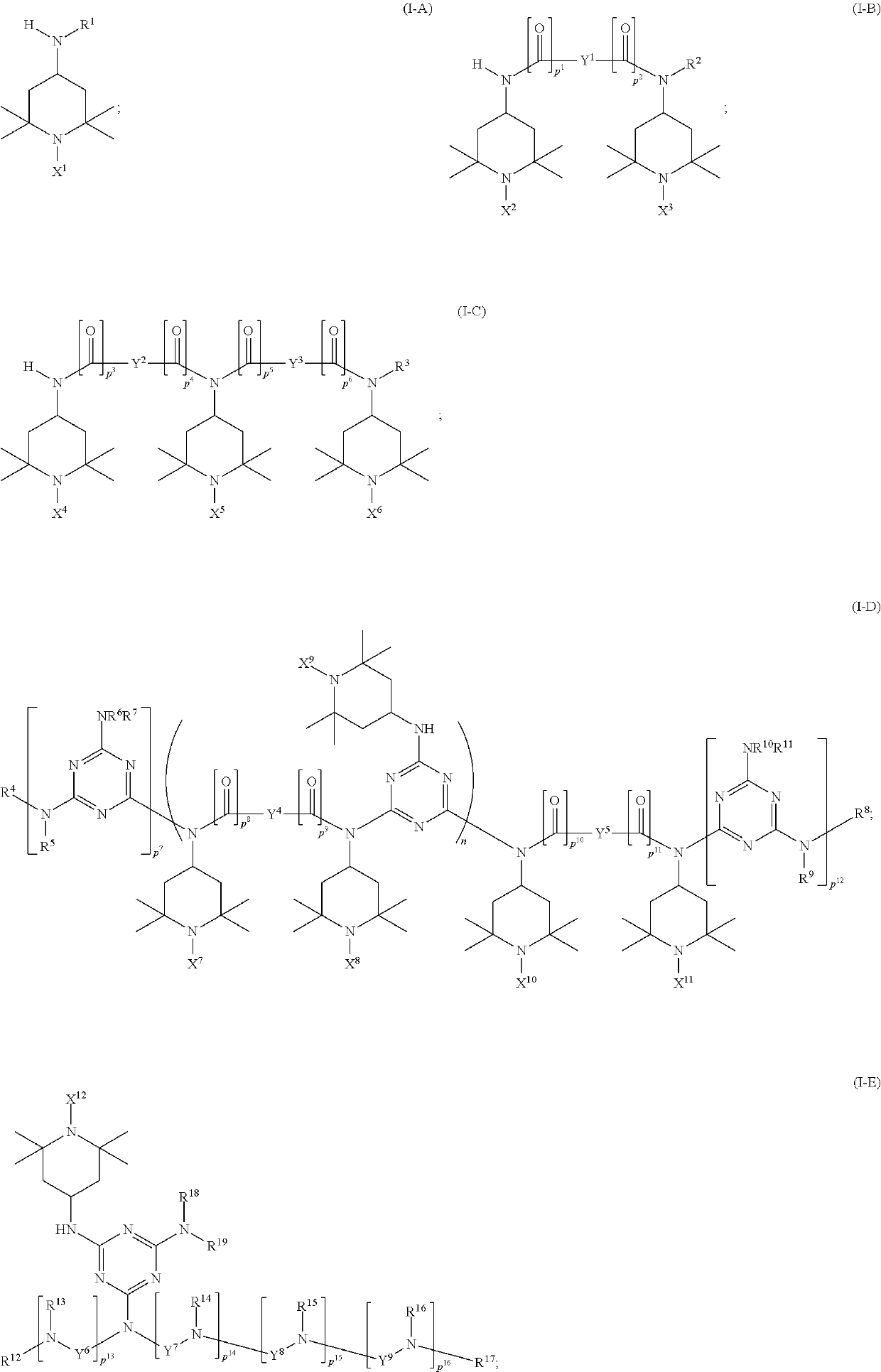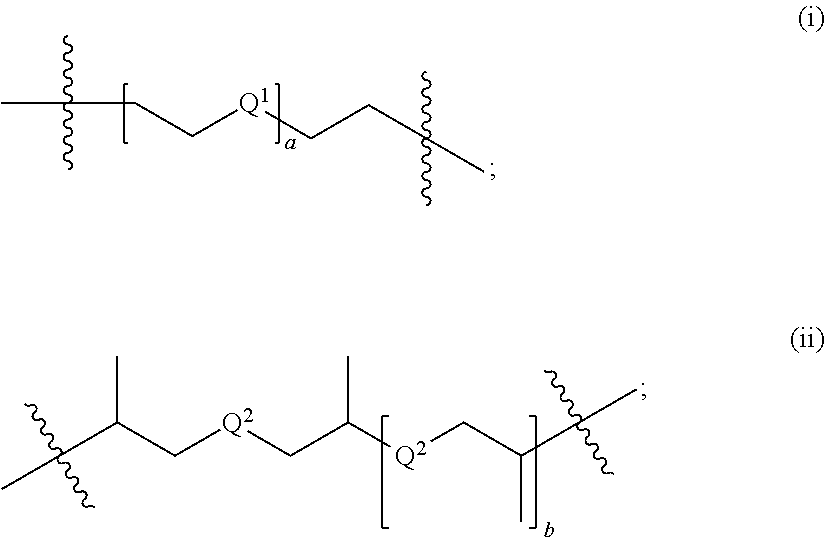Synthesis of triacetonediamine compounds by reductive amination proceeding from triacetonediamine and derivatives thereof
a technology of triacetonediamine and amination proceeding, which is applied in the field of synthesis of triacetonediamine compounds by reductive amination proceeding from triacetonediamine and derivatives thereof, can solve the problems of affecting the quality of plastics with regard to colour properties, discolouration of materials, and unavoidable taa residual content in end products, and achieves the effect of higher colour stability
- Summary
- Abstract
- Description
- Claims
- Application Information
AI Technical Summary
Benefits of technology
Problems solved by technology
Method used
Image
Examples
examples
Inventive Examples I1-I7
[0975]A 100 ml pressure autoclave was preheated to 60° C. by means of a thermostat. Then 25 ml of toluene and 39 g (0.25 mol) of triacetonediamine (TAD) are added to the reactor and stirred. Thereafter, 18 g (0.25 mol) of butanal are added. The catalyst (0.2 mol % based on TAD) was added and the reactor was closed. The catalysts taken are Raney nickel (I1), Ru (I2), Pt (I3), Rh (I4), Pd (I5), Ir (I6) and Co (I7). Experiments I2 to I7 involve pulverulent catalysts. All catalysts are available from Sigma Aldrich or Strem.
[0976]Hydrogen was injected while stirring (10 bar H2) and the internal autoclave temperature was increased from 60° C. to 90° C. within 1 hour, then kept at 90° C. for 3 hours. This is followed by conversion at 120° C. for another 1 hour.
[0977]The reactor was then cooled down and decompressed. The crude product was discharged and filtered and then the solvent was first removed (80-120° C., 400 mbar). The residue was subsequently purified by me...
PUM
| Property | Measurement | Unit |
|---|---|---|
| pressure | aaaaa | aaaaa |
| temperature | aaaaa | aaaaa |
| temperature | aaaaa | aaaaa |
Abstract
Description
Claims
Application Information
 Login to View More
Login to View More - R&D
- Intellectual Property
- Life Sciences
- Materials
- Tech Scout
- Unparalleled Data Quality
- Higher Quality Content
- 60% Fewer Hallucinations
Browse by: Latest US Patents, China's latest patents, Technical Efficacy Thesaurus, Application Domain, Technology Topic, Popular Technical Reports.
© 2025 PatSnap. All rights reserved.Legal|Privacy policy|Modern Slavery Act Transparency Statement|Sitemap|About US| Contact US: help@patsnap.com



